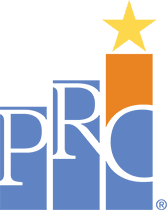When I was very young, I wanted to be a zookeeper. Not because I had a strong yen for biology or a desire to clean up after elephants, but because I was deeply indignant that going to the zoo only meant looking, not touching. I wanted so badly to pet the lions, but several barriers (figuratively and literally) stood between me and my fanged feline goal. “Surely their handlers would get to pet them,” I thought to myself, so I started telling every adult who asked that I wanted to be a zookeeper when I grew up.
Funnily enough, I married a zookeeper, albeit a zookeeper who spends his days with fish, not lions. Being a zookeeper’s wife means a lot of fun adventures, but it also led to the crushing discovery that most keepers aren’t allowed to snuggle their charges. This is the reality of working with wild animals—but it wasn’t always this way. Just as mid-century hospitals would look quite foreign to today’s caregivers, post-WWII zoos look very different than the large, natural enclosures you find today.
The USDA and the Association of Zoos and Aquariums do a much better job of regulating the care of zoo animals than in decades past. Mandatory inspections and national standards mean that modern zoos are safer for everyone (and the reason you don’t see many barred cages or free animal contact anymore). Anyone who has been in the zoological industry long enough has watched the landscape literally evolve, much like those in healthcare have seen their jobs change over time. With these changes, however, can come blind spots and nostalgia, especially impacting those who have stayed with one institution for the bulk of their career.
Staying the course
In a volatile economy, with our last economic depression just a decade behind us and another potentially on the horizon, obtaining job seniority is an impressive feat. Anyone who has managed to hold their role for decades likely knows their position and organization like the back of their hand. This longevity, however, it not without drawbacks.
For many people, the longer you hold a role, the more change-averse you may become. This is an inherent reaction to experiencing the ebb and flow of your organization; you’ve probably seen more than one initiative start and fail, the lifecycle of many ideas in the workplace. This can make it difficult to get on board with new ideas and embrace change as readily as a young or transient employee. After all, only those who have always been around can say “that’s how we’ve always done it.” As hospital leaders move up the chain of command and away from direct interaction with patients, it’s easy to lose touch with new ideas and become insulated in what we know; the paths taken to our own success seem like the least risky option.
It’s these attitudes that breed resistance to change. Left unaddressed, these differing attitudes create generational barriers between those that have always been and those seeing the organization through fresh eyes. Changing jobs every five or so years might be a great way to stay on your toes and advance your career, but that simply isn’t feasible for everyone, especially if you’re unable to move. How then, can a leader stay fresh in their organization while still being effective?
Released from the rut
Staying curious is the easiest way to avoid ruts of all kinds. To avoid getting stuck in your own ways, consider constant rounding and building familiarity with the frontline staff. Stay curious about everyone, from your patients to your front-line staff to your environmental services team. If you’re able, leverage an ethnography study for a detailed look at what happens directly at your bedside. At the very least, round on as many people as you can, see how and why they do what they do. Ask questions and listen to their answers without sharing your own ideas—just listen. By molding yourself back into the sponge you were when you first came to your hospital, you’ll find yourself (slowly) seeing the organization through fresh eyes.
Traveling, in both personal and professional capacity, keeps us curious. Travel can be big or small, any movement can be productive when approached with a growth mentality. Travel to meetings across the hospital campus and ask questions face to face. Travel to conferences and lectures and networking events. The more you leave your office, the more you’ll grow beyond your comfort zone. By carving out a few short days each quarter to feed your own curiosity—and leveraging the opportunity by speaking with new people and taking good notes—you invest in both your own development and your capacity to lead organizational growth.
Next month, PRC will host our fall summit at the Tulsa Zoo. We’ve invited healthcare professionals from across the country who are working to transform their organization’s patient experience for a day of networking and learning together. With insights from PRC and Excellence Accelerator® leaders alike, this opportunity offers education and development for the many facets of patient experience, as well as a valuable networking experience for individual career growth. Spots are limited, but registration is still open if you’re ready to carve out time to stay curious, get out of your rut, and go to the zoo.

